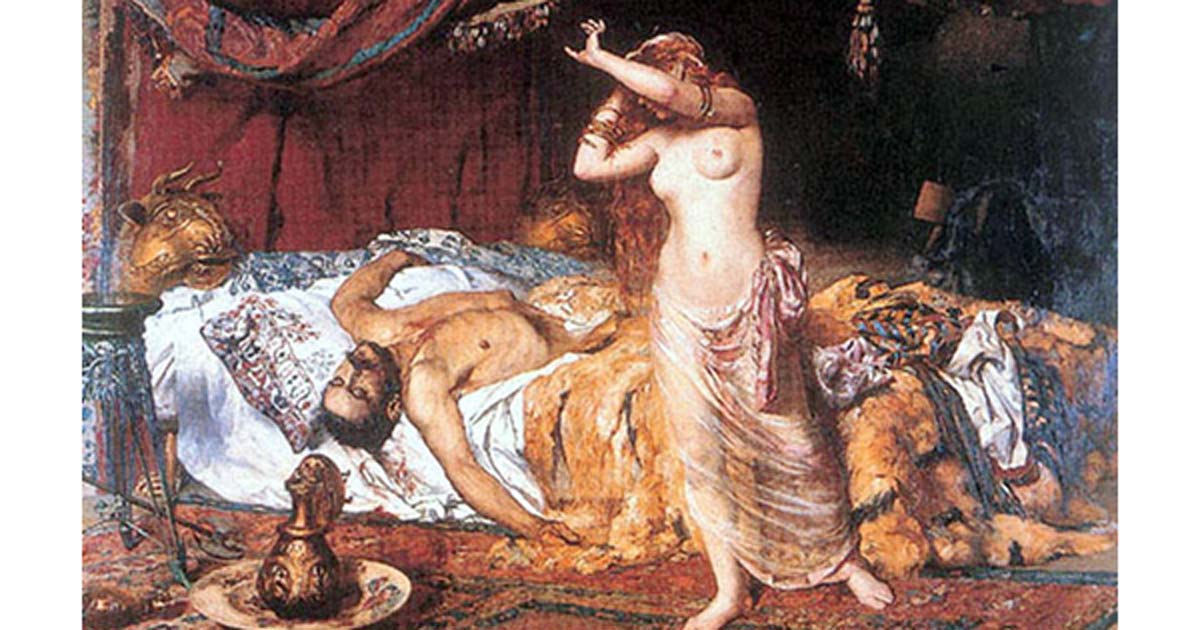–
Attila the Hun was also known as Flagellum Dei, which means the ‘Scourge of God.’ With him at the lead, the Huns were one of the biggest threats faced by the Roman Empire. Although he was famously defeated by the Romans under Flavius Aetius and their Visigothic allies under Theoderic I at the Battle of Catalaunian Plains, Attila the Hun and his warriors were still a threat to the Western Roman Empire . It was only in 453 AD, following Attila’s death, and the fall of the Hunnic Empire about a year later, that the Roman world was finally freed from the threat of the fearsome Huns.
Attila the Hun’s Battle with the Romans
In 451 AD, the Huns suffered a defeat at the Battle of the Catalaunian Plains. This forced Attila and his men to retreat back to the heart of the Huns’ Empire in Central Europe. There, the Huns regrouped for another invasion. Initially, Attila had intended to launch an attack on the Eastern Roman Empire . The emperor changed his mind, however, and decided to invade the Western Roman Empire once more in 452 AD. The Huns crossed the Alps and caught the Western Romans off guard. As a result, many northern cities in the Italian Peninsula, including Aquileia, Verona, and Milan were sacked by the Huns.
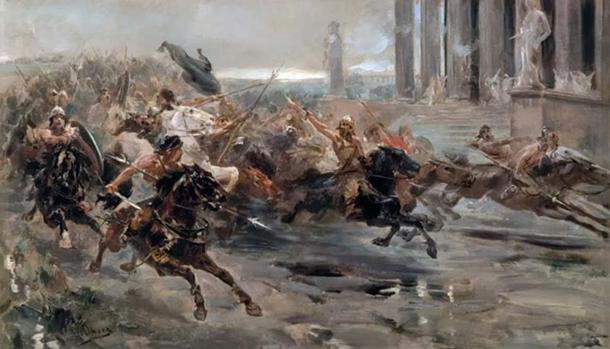 ‘Invasion of the Barbarians’ or ‘The Huns approaching Rome,’ by Ulpiano Checa. ( Public Domain )
‘Invasion of the Barbarians’ or ‘The Huns approaching Rome,’ by Ulpiano Checa. ( Public Domain )
Rome itself was spared, however, as Attila and his warriors did not progress south of the Po River. Following a meeting between the Hunnic Emperor and a delegation led by Pope Leo I, which was sent by the Western Roman Emperor, Attila and the Huns turned back. It is unclear as to the reason behind Attila’s decision to stop his invasion of Italy, though several speculations have been made.
- Merciless Marauders or Fearsome Fighters? The Terror Tactics of the Huns
- The Hunnic War Machine: The Push Westward – Part I
- The Scourge of God: Did Attila the Hun Really Deserve the Nickname?
According to tradition, it was Leo’s diplomacy that saved Rome from the Huns. Others have suggested that a plague had broken out amongst Attila’s men, hence making it impossible for the Huns to continue their invasion southwards. Another proposal is that Attila had been warned by his men not to attack Rome, as Alaric I, the Gothic ruler who had sacked the city in 410 AD, had died shortly after this accomplishment. According to superstition, the Gothic ruler’s death was due to his attack on this great city. It is also plausible that it was a combination of factors that caused Attila to cease in invasion.
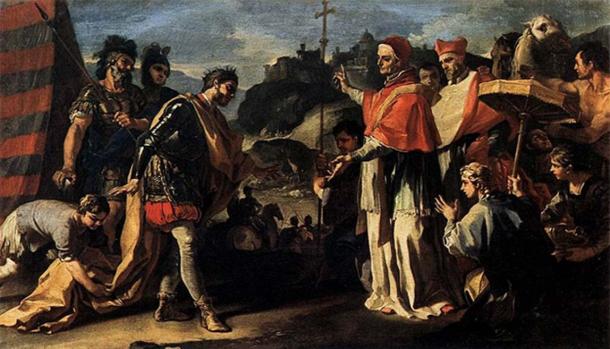 ‘The Meeting of Pope Leo and Attila’ by Francesco Solimena (Public Domain). The Huns turned back from their plans to invade Rome soon after this encounter.
‘The Meeting of Pope Leo and Attila’ by Francesco Solimena (Public Domain). The Huns turned back from their plans to invade Rome soon after this encounter.
The Death of Attila, the Heart of the Huns
In any case, Attila the Hun would be dead in the following year. There are several versions of how the “Scourge of God” met his end. In 453 AD, Attila married a woman by the name of Ildico. He was found dead the next morning.
According to one version of events, Attila had been feasting on the night of his wedding. As a result of his over-indulgence, he suffered from a burst blood vessel, which caused blood to flow into his throat, thus choking him to death. Other accounts include the suggestions that Attila had been assassinated by Ildico (who was working for Marcian, the Byzantine Emperor ), or he had been killed accidentally by alcohol poisoning.
- Discovery of Attila the Hun tomb in Hungary is a hoax
- Mysterious 1,500-Year-Old Stone Complex Unearthed in Kazakhstan
- Woman buried with weapons is first evidence of female warriors among the Kangyuy people of Kazakhstan
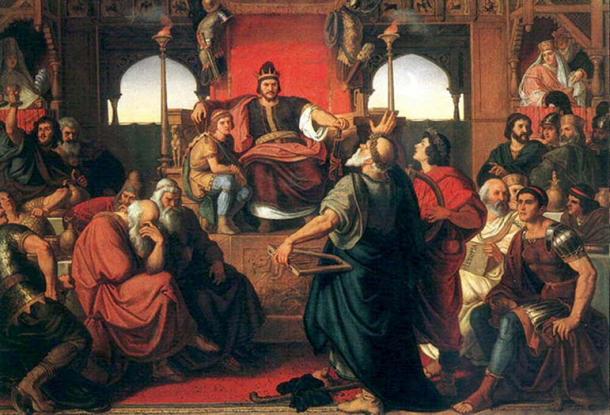 ‘Feast of Attila’ (1870) by Mór Than. ( Public Domain ) Legends say that the Huns leader, Attila, died after a night of feasting – however the exact cause of his death has been debated.
‘Feast of Attila’ (1870) by Mór Than. ( Public Domain ) Legends say that the Huns leader, Attila, died after a night of feasting – however the exact cause of his death has been debated.
The Division of the Huns and The Empire’s Demise
Regardless of the circumstances of Attila’s death, the Hunnic Empire soon fell apart. The empire was divided between Attila’s three sons, Ellac, Dengizich, and Ernakh. Civil war ensued, as the brothers fought each other to increase the territory they controlled. Whilst this was going on, the vassals of the Huns saw it as an opportunity to gain their independence. The first of these to rise against the Huns was Ardaric, the King of the Gepidae. In 454 AD, the Huns were defeated at the Battle of Nedao by Ardaric, and Ellac was killed.
Other tribes quickly followed Ardaric’s lead, and the Hunnic Empire was soon dissolved. The Huns disappear from the historical sources after 469 AD, as neither their campaigns, their settlements, nor any of their activities are mentioned after that year. All that remains of the Huns today [besides the nation of Hungary] are the memories of when they were a terrifying force led by their most powerful leader, Attila the Hun.
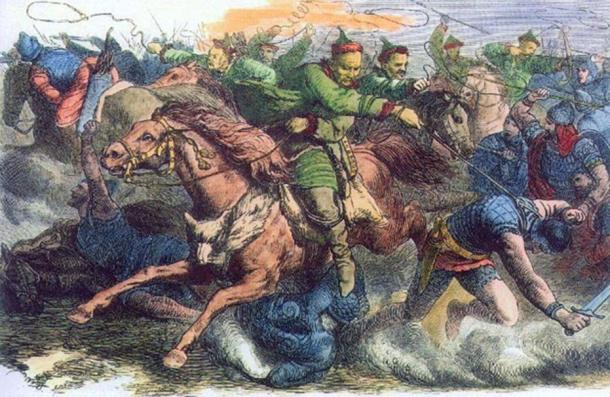 ‘Huns in battle with the Alans.’ An 1870s engraving after a drawing by Johann Nepomuk Geiger. ( Public Domain )
‘Huns in battle with the Alans.’ An 1870s engraving after a drawing by Johann Nepomuk Geiger. ( Public Domain )
Top image: ‘Death of Attila’ by Ferenc Paczka. The Huns were severely weakened following Attila’s death in 453 AD and the Hunnic Empire soon fell. (Source: Public Domain)
By Wu Mingren
–
References
Invictus, 2001. The Huns. [Online]
Available at: http://www.allempires.com/article/index.php?q=huns
Jarus, O., 2014. Attila the Hun: Biography of the ‘Scourge of God’. [Online]
Available at: http://www.livescience.com/44417-attila-the-hun.html
Szczepanski, K., 2017. Biography of Atilla the Hun. [Online]
Available at: https://www.thoughtco.com/attila-the-hun-195666
www.biography.com, 2017. Attila the Hun. [Online]
Available at: http://www.biography.com/people/attila-the-hun-9191831
–
(For the source of this, and many other equally intriguing articles, please visit: https://www.ancient-origins.net/history-famous-people/end-huns-death-attila-and-fall-hunnic-empire-007740/)









